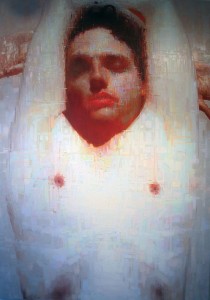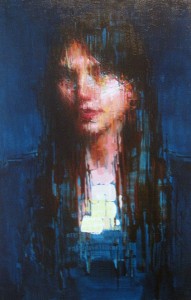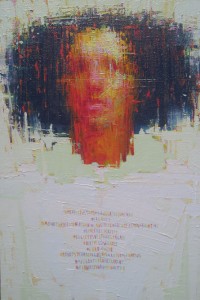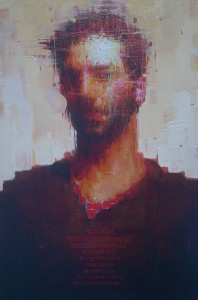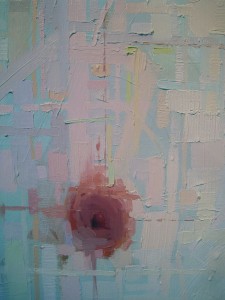In Washington D.C.’s National Gallery there hangs an anatomically correct, rather contemporary portrait of a man in an ornate gold frame. There is nothing unusual about it until the viewer reads the title plate: “Portrait of the Art Dealer Pedro Manach” by Pablo Picasso. Nothing in this portrait hints of the strangely articulated humans or cubistic shapes of the figures that will appear in the future. This artist would have been known to history as a highly accomplished painter had he continued creating conventional works such as this, but Picasso would not have achieved iconic status.
So when viewing the recent paintings by Eric Pedersen (currently on view at the Katherine Cone Gallery in Culver City until October 12), one might wonder if this highly accomplished, salon academy-trained figurative artist will, like Picasso, have visual surprises in the future. There are definite signs in these recent works of an artist making brave attempts beyond just “wowing” viewers with his stunning technique.
Pedersen is a product of the Los Angeles Academy of Figurative Art and studied under realist portrait painter Sean Cheetham (who has also exhibited at the Katherine Cone Gallery). The Academy provides thoroughly rigorous training of great value to any painter or sculptor if they can later avoid creating static formulaic output. Traditionally trained artists can and do produce truly novel works, as used to be seen at the Los Angeles Forum Gallery (now closed but continuing at their New York site). Such artists as Steven Assael, Xenia Hausner, or Odd Nerdrum, naming but a few, push realism to truly original zones. In many ways, trying to break into terra incognita through traditional realism can be a far greater challenge than working in contemporary styles where there are few expected boundaries.
In the show Pedersen exhibits nine paintings of varying sizes that have a strong yet ethereal presence. Six of the paintings are in a traditional format still identifiable as executed in the LAAFA instructional style. The title of the show, “Sleeping Giants,” is applicable to the four remaining paintings, which begin to display a marked shift in direction.
In the portrait “#Kuza,” Pedersen creates a golden luminosity of an Assael painting and lives in the atmospheric make-believe world of a Nerdrum. The artist creates palette knife and brush slashes of lines that move vertically in some parts and horizontal in others, so that when viewed up close, a high degree of abstraction reveals itself. The other figures, one of Sean Cheetham, display much the same striation, especially the portrait entitled “#Alvarado.” The backgrounds of both vibrate beautifully but at this point act only as traditional space fillers.
Apparently sensing the restriction inherent in traditional portrait backgrounds, Pederson crops out all or most of the background in the three paintings depicting faces of sleeping persons. The effect is immediate, forcing the viewer to experience the paintings as if close up. In his “Zero Nine Two One Nine Eight Eight” and “Zero Seven Zero Six One Nine Eight Three” portraits, a more candid and spontaneous feel is established. In the “Painting of Aaron Half Asleep” there’s even an effort at expressionistic figuration.
The largest of the paintings, (112” by 78”), entitled “The Untitled Painting of Jonny Sleeping” is a minor tour de force. In this piece the face receives most of the various pigments and value range instead of the body, coincidently much as in the Picasso portrait already mentioned. The painting is remarkably like gazing at a creation from the hand of the great Vienna Secessionist Gustav Klimt.
Although the pale areas of the body and arms are more suggested than stated, they are still highly worked over with Pedersen’s horizontal and vertical crosshatching overlays.
In the latest “ArtScene” review of Pedersen, Bill Lasarow found his crosshatching “…limited and repetitive.” However, I did not sense this, but found it instead to be superbly handled, guaranteeing the ultimate visual success of the portraits.
As Eric Pedersen continues his studies at the New York Academy of Art, it will be interesting to see the effect of that experience on his future art making.

